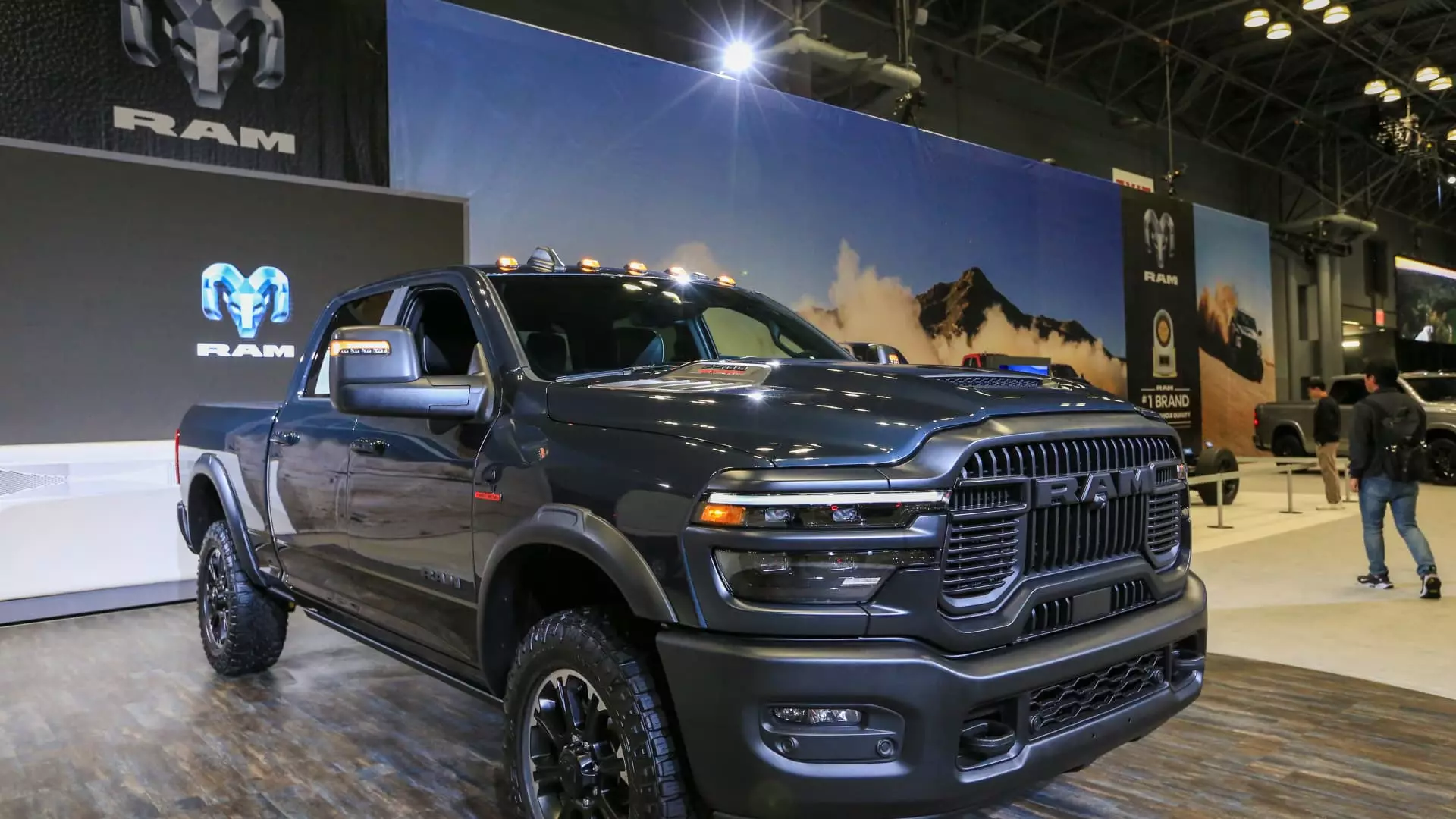In the rapidly evolving automotive landscape, certainty is a luxury that few manufacturers can afford. With consumer expectations mounting and the competition intensifying, it is crucial for brands to innovate, adapt, and fundamentally change their approach to meet the challenges of modernity. Ram Trucks’ recent announcement to unveil a groundbreaking 10-year or 100,000-mile warranty across their 2026 lineup represents such a pivotal shift. This move not only seeks to strengthen customer trust but also acknowledges the harsh reality that industry standards have lagged in the face of escalating vehicle prices and financing terms.
Historically, the warranty landscape for full-size pickup trucks has been remarkably stagnant—most manufacturers offered standardized five-year or 60,000-mile protections. Ram’s bold decision to extend their warranty duration assumes a more customer-centric approach, recognizing that buyers opt for long-term financing, often stretching seven years or longer. The stark contrast between the cost of investment in vehicles and the limited coverage provided has become more apparent, demanding an answer.
Understanding Customer Behavior: The Core of a Winning Strategy
Ram Trucks’ CEO, Tim Kuniskis, astutely identified a crucial disconnect in the market: while consumer financing has lengthened, warranty coverage has remained stagnant. As the average truck buyer increasingly opts for longer loan terms, it has become imperative for automakers to reflect this behavior in their offerings. This strategic pivot isn’t merely reactive; it is an insightful acknowledgment of how customer dynamics have evolved.
One cannot overlook the significance of loyalty in truck ownership—where the tendency is to hang onto a vehicle for more than a decade. This means that the potential habit of customers financing their truck for an extended period should be directly reflected in warranty coverage—a move that aligns both customer interests and business goals. Kuniskis’s recognition of this shift underscores the necessity for brands to evolve rather than remain complacent in a competitive marketplace.
The Unintended Consequences of Increased Warranty Offerings
While the introduction of a lengthy warranty can enhance consumer appeal, it isn’t without potential pitfalls. Ram’s initiative may indeed catalyze an uptick in customer acquisition and retention, but it also opens the door to risk. If quality issues arise in mass-produced vehicles, the expenditures related to extended warranty claims could amount to billions. The balance between perceived value and financial exposure becomes fraught with uncertainty as automakers attempt to navigate the implications.
Furthermore, a longitudinal warranty could disincentivize some consumers from considering new purchases as they choose to hold onto their vehicles for extended periods, reducing immediate sales potential. Ram must tread carefully; while providing security for consumers is laudable, it is also vital for the brand to cultivate generational loyalty without compromising future sales.
Setting a New Standard: Competitors Inside and Outside the U.S.
In a courageous move bolstered by research, Ram is setting a new benchmark for warranties in a market dominated by competitors like Ford and General Motors, who have traditionally operated within the conservative five-year framework. Although Kia has succeeded with a similar offering, Ram’s unique position as a luxury truck brand amalgamates both boldness and risk, allowing them to stand out in a saturated field.
This strategic pivot should inspire not only rival brands but also set a precedent across the industry—one that encourages risk-taking and innovation to enhance consumer protection. By aligning warranty protections with actual consumer behavior, Ram has the opportunity to redefine what truck ownership looks like in America.
The Road Ahead: Embracing Change for Lasting Success
As Ram Trucks moves forward under Kuniskis’s leadership, commitment to consumer-centric innovation will be paramount. Fostering a culture that champions quality without sacrificing margins will be critical in the years to come. Future strategies should also involve comprehensive customer feedback mechanisms to gauge sentiment and responses as the market dynamics shift.
Ultimately, Ram’s current approach is more than just a warranty enhancement—it is a daring foray into reshaping the customer experience. To successfully navigate the complex terrain ahead, Ram Trucks must continue to embrace an attitude of boldness, resourcefulness, and adaptability in everything they do. Only then can they harness the potential of this industry-largest warranty and establish themselves as a dominant force in the automotive market.

